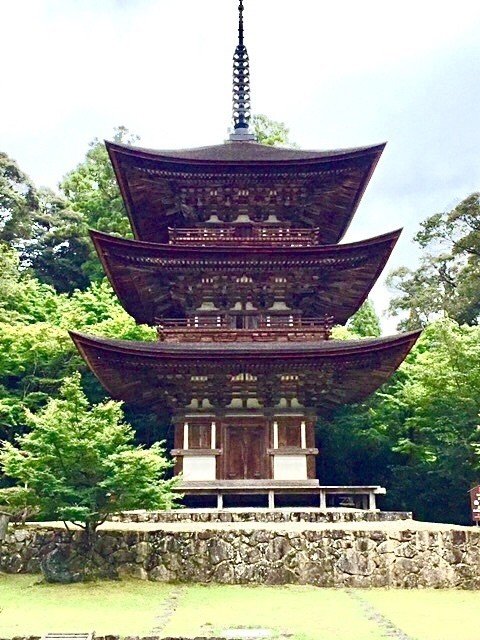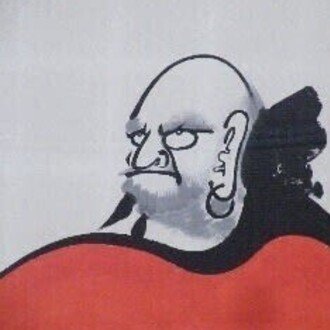
湖東三山、西明寺の国宝、本堂と三重塔の重さ。【淡海シリーズⅣ】 The greatness of Koto Sanzan, the national treasure of Saimyo-ji, the main hall and the triple tower.
滋賀県は、京都、奈良に並ぶ文化財の宝庫である。淡海(琵琶湖)の水脈と水路は都を支え、都からの移動の拠点であったこと。さらに西に比叡山や、東に岐阜、石川にまたがる日本の名山といわれる白山の信仰を受けた場所として淡海の周辺に数々の文化が育まれた。
Shiga Prefecture is a treasure trove of cultural properties along with Kyoto and Nara. The watercourses and waterways of the Omi (Lake Biwa) supported the city and were the bases for movement from the city. Furthermore, many cultures have been nurtured around Omi as a place of worship of Mt. Hiei in the west Gifu and Ishikawa in the east, which is said to be Japan's famous mountain.
とくに、湖東には平安時代、鎌倉時代、室町時代に建造された寺院が至る所にある。その中でも鈴鹿山脈の連山のなかに「湖東三山」のひとつが龍應山西明寺(りゅうおうざんさいみょうじ)は、鎌倉時代の初期に建立された由緒ある寺院である。
Especially in Koto, there are many temples built during the Heian, Kamakura and Muromachi periods. Among them, Ryuozan Saimyo-ji is one of the "Koto Sanzan" in the mountains of the Hakusan Mountains, and it is a historic temple built in the early Kamakura period.
国宝に指定されている本堂は、屋根が檜皮葺きで、蟇股(かえるまた/和様建築で,梁や頭貫 ( かしらぬき) 上にあって上の荷重を支えるもの/カエルが脚を開いたときの形)等、鎌倉時代の建築様式が保存されている。本堂の前に立って眺めていると歴史の重みと時代の移ろいを感じる。本堂内は、残念ながら見ることはできなかったが、本尊薬師如来立像(重文/平安時代)、十二神将など多数の仏像が安置されている。
The main hall, which is designated as a national treasure, has a cypress-skined roof, Kaerumata/Japanese-style architecture, and supports the load above it on the beams and Kashiranuki/Frogs opening their legs. The architectural style of the Kamakura era, such as the shape of the time when it was played, is preserved. When standing in front of the main hall and looking at it, you can feel the greatness of history and the changing times. Unfortunately, l couldn't see the main hall inside, but there are many Buddhist statues such as the statue of the Buddhist priest Yakushi Nyorai (Heian period) and the 12 deities.

鎌倉時代後期に建造された、国宝三重塔 / The three-storied pagoda, a national treasure, was erected in the latter half of the Kamakura era
国宝の三重塔は鎌倉時代後期に建立され、本堂と同じく釘を使ってない純和様建築。パンフレットによれば、内部には大日如来座像があり、堂内一面には脇侍仏として三十二菩薩、法華経の図解が岩絵具で極彩色に描かれている。これらは鎌倉時代の壁画としては国内唯一のものとされている。
The three-storied pagoda, a national treasure, was erected in the latter half of the Kamakura era and is a pure Japanese-style building that does not use nails like the main hall. According to the pamphlet, there is a statue of Dainichi Nyorai in the interior, and on the one side of the temple, the illustrations of 32 Bodhisattva and Hokke Sutra as a side Samurai Buddha are drawn in vivid colors with rock paint. These are the only mural paintings in the Kamakura period in Japan.


心の字を形どった池、心字池に鶴の形をした「鶴島」と亀を形どった「亀島」がある / the Shinjiike pond includes Tsurushima in the shape of a folded crane and Kamejima in the shape of a turtle.
さらに目を惹いたのが庭園「蓬萊庭」。薬師如来、日光・月光菩薩の三尊仏を現す立石や、十二神将を現す石組みがあり、また心字池には折り鶴の形をした鶴島と亀の形をした亀島がある。コンパクトにまとめられた庭園に魅了された。 京都や奈良もいいが、湖東の山の中に佇む寺院を観るとその淡海の歴史の深さがみえてくるようである。
What was even more eye-catching was the garden, "Horaitei." Yakushi Nyorai, standing stones, which represents the three Buddha statues of Nikko and Gekko bodhisattva, and the stone set, which represents the twelve gods, and the Shinjiike pond includes Tsurushima in the shape of a folded crane and Kamejima in the shape of a turtle. I was fascinated by the compact garden. Kyoto and Nara are also good, but when you look at the temple standing in the mountains of Koto, it seems that you can see the depth of the history of Omi.
レポート & 写真 / 渡邉雄二
Reported & Phpoto by Yuji Watanabe
いいなと思ったら応援しよう!

